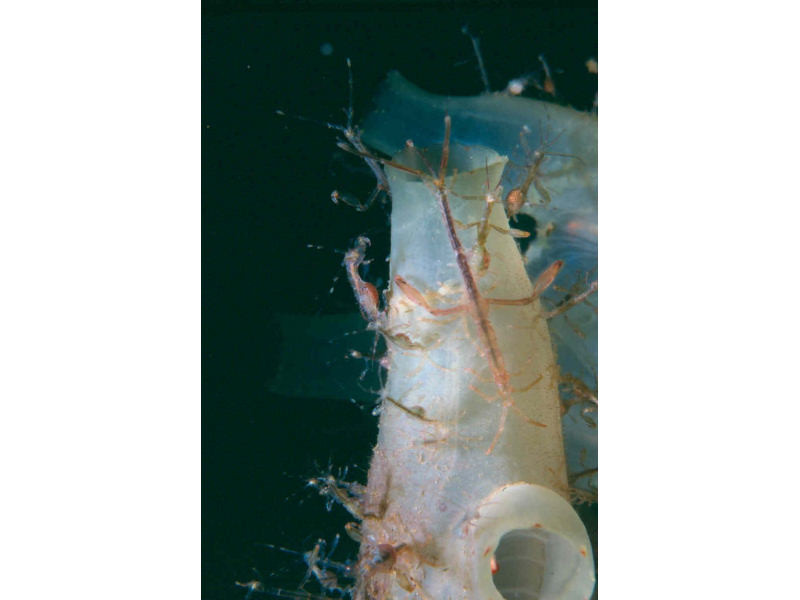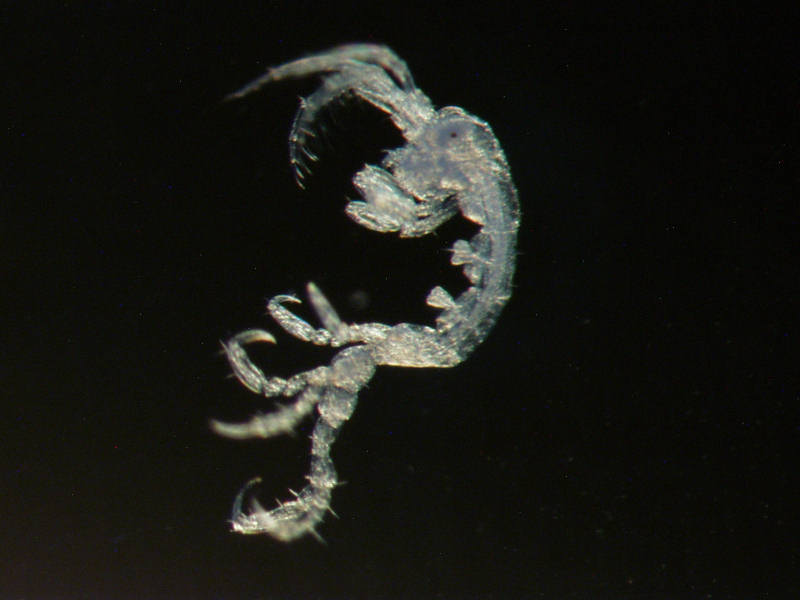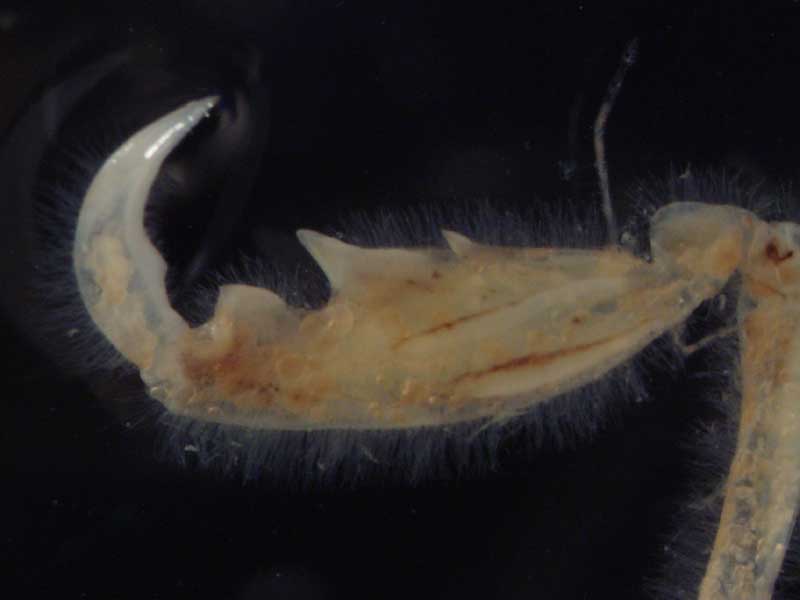Japanese skeleton shrimp (Caprella mutica)
Distribution data supplied by the Ocean Biodiversity Information System (OBIS). To interrogate UK data visit the NBN Atlas.Map Help
| Researched by | Judith Oakley | Refereed by | Admin |
| Authority | Schurin, 1935 | ||
| Other common names | - | Synonyms | - |
Summary
Description
Recorded distribution in Britain and Ireland
Recorded from southern and south west England, the west coast of Scotland, Western Isles and west coast of Ireland.Global distribution
Recorded from Pacific and Atlantic coasts of N. America, New Zealand, Norway, Germany, Belgium and the Netherlands.Habitat
Caprella mutica is found on a range of natural substrata such as hydroids and algae and artificial substrata including buoys, mooring ropes, boat hulls and floating pontoons. It is often found in association with Sargassum muticum.Depth range
-Identifying features
- Larger than native caprellids - males up to 3.5 cm, females 1.5 cm.
- Usually bright orange or red in colour.
- The first two of seven pereonites are elongated in the male and densely covered with hairs.
- The second pereonite is the longest.
- In females, there are no hairs on pereonites I and II.
- The pereonites of females are greatly shortened compared with males.
- In males, the first antennae are slightly greater than half the body length.
Additional information
The first record of Caprella mutica for the UK was in July 2000, from a fish farm in Scotland (Willis et al., 2004). The species' natural distribution is the coastal waters of the sub-boreal areas of north-east Asia (Willis et al., 2004). Little is known about the biology or ecology of this species. Each female can produce up to 150 hatchlings every 45-50 days. Caprella mutica is native to the coastal waters of East Africa and Siberia. It was introduced to North America (Pacific coast) accidentally through shipments of Japanese oysters. The method of introduction to the UK is unknown, but likely to be via shipping and aquaculture. Caprella mutica has been found in high concentrations in marine Special Areas of Conservation (SACs) designated for their biogenic reefs. The impacts on these habitats, if any, is not known. Found in high densities especially during May to September.Listed by
- none -
Bibliography
Cook, E., 2005. Japanese skeleton shrimp Caprella muticum. Marine Aliens project. [On-line] http://www.marlin.ac.uk/marine_aliens/marine_aliens.htm,
Eno, N.C., Clark, R.A. & Sanderson, W.G. (ed.) 1997. Non-native marine species in British waters: a review and directory. Peterborough: Joint Nature Conservation Committee.
JNCC (Joint Nature Conservation Committee), 1999. Marine Environment Resource Mapping And Information Database (MERMAID): Marine Nature Conservation Review Survey Database. [on-line] http://www.jncc.gov.uk/mermaid
Willis, K.J., Cook, E.J., Lozano-Fernandez, M. & Takeuchi I., 2004. First record of the alien caprellid amphipod, Caprella mutica, for the UK. Journal of the Marine Biological Association of the United Kingdom, 84, 1027-1028.
Datasets
Centre for Environmental Data and Recording, 2018. Ulster Museum Marine Surveys of Northern Ireland Coastal Waters. Occurrence dataset https://www.nmni.com/CEDaR/CEDaR-Centre-for-Environmental-Data-and-Recording.aspx accessed via NBNAtlas.org on 2018-09-25.
Fenwick, 2018. Aphotomarine. Occurrence dataset http://www.aphotomarine.com/index.html Accessed via NBNAtlas.org on 2018-10-01
Merseyside BioBank., 2018. Merseyside BioBank (unverified). Occurrence dataset: https://doi.org/10.15468/iou2ld accessed via GBIF.org on 2018-10-01.
NBN (National Biodiversity Network) Atlas. Available from: https://www.nbnatlas.org.
OBIS (Ocean Biodiversity Information System), 2025. Global map of species distribution using gridded data. Available from: Ocean Biogeographic Information System. www.iobis.org. Accessed: 2025-04-15
Citation
This review can be cited as:
Last Updated: 24/10/2006





